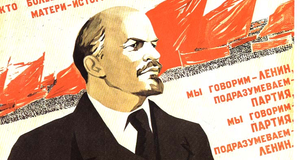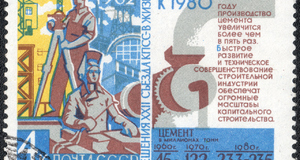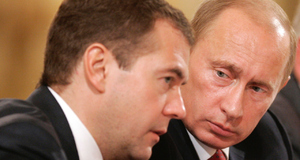Molding the Peasantry on the Road to Modernity: State and Peasant Relations in Russia and the Soviet Union
By
2020, Vol. 12 No. 11 | pg. 1/1 AbstractThis paper examines the peasantry's response to modernization measures taken by Imperial Russia and the Soviet Union during the late 19th and early 20th centuries. In the pursuit of modernity, the Tsarist Russian and early Soviet regimes altered the nature of the peasantry through domestic policy and reactions to international crises. The shifting social spheres among peasants prompted two reactions: resistance to governmental forces or adaptation to the new order to maximize personal gain. In both cases, peasants exerted great agency over their situations and although subject to governmental structures which upended tradition, found new ways to navigate their world and achieve socio-economic gains. During the 18th and 19th centuries, post-Enlightenment Europe espoused the notion of modernity as a central tenant of contemporary absolutist regimes. In Russia, Peter the Great and Catherine II sought to modernize Russia, which required distancing from the international reputation of Russian backwardness. The concept of modernity sought by Imperialist Russia was a reflection of Western Europe’s new understanding of political nature, social contracts, and economic sophistication which demanded rapid industrialization and liberal social reforms. Likewise, achieving modernity was a central aim of the Soviet Union; however, for Lenin and Stalin modernity was not an image of the West, but a rather a socialist, industrial utopia capable of leading the world– including the West– into Communism. In the pursuit of modernity, both the Tsarist and socialist regimes altered the nature of the peasantry through political and economic maneuvers. The rapidly changing essence of the peasantry, dictated by the pragmatic demands of domestic and international crises, created instability in the countryside among other intolerable conditions. The peasantry, in response to the pangs felt from modernization, reacted in one of two ways: by resisting the governmental forces or by harnessing the new order for personal gains. In both cases, peasants exerted agency over their situation by limiting the power of the government in controlling the nature of the peasantry and by utilizing their present circumstances for socio-economic mobility. The Russian drive toward modernity prompted Alexander II to relinquished Russia’s feudal economy by emancipating the serfs. The 1861 Emancipation Manifesto endowed the lowest class with new claims to citizenship and land, in accordance with the liberal ideals and changing economies of Europe. In the late 19th century, Minister Sergei Witte introduced a new wave of industrial and transportation reforms in addition to a drastic change in the economic structure of the peasantry. Witte abolished the communal Mir and implemented the privatized English system of land for the peasantry. The English model enabled successful peasants to buy out land from their less profitable neighbors then hire landless peasants as agricultural wage-earners. The distinction between landowner and wage worker soon stratified the peasantry and created modern class divisions the Russian economy. Urbanization, along with the development of a working and middle class, brought Russia into a new age of social modernity, making up for the slow transition from feudalism to capitalism. Witte’s reforms elevated Imperial Russia to a position which resembled the modern West.In 1904-1905, the Russo-Japanese War occupied the Russians in a disadvantageous battle, resulting in 80,000 casualties and the destruction of their navy.1 The Romanov embarrassment brought to light the empire’s many weaknesses and created an opportunity for political maneuvering by periphery groups. Unable to maintain a duality of economic modernity and archaic politics sought by Witte and Stolypin, the regime was challenged by the political efficacy and expectations among the peasantry and urbanites alike. The peasants, along with industrial workers and the new radical intellectual elite rallied against Nicholas II after Bloody Sunday. The resulting October Manifesto conceded elements of political modernity to the masses through a recognition of basic civil rights, establishing the Duma, and creating a multiparty system in Russia. The October Manifesto is evidence that the masses– at the time composed 86 percent by peasantry – successfully resisted state mandates on the nature of the peasantry. The peasantry asserted modern political rights and powers, which elevated the role of peasant beyond that of passive workfolk crafted by the state, and closer to the nature of independent political actor, albeit subdued. Despite concerns from political allies of Nicholas II such as Peter Durnovo, the decrepit monarchy embraced the war as a last opportunity to assert Russian modernity for the world to see. The regime’s decision to enter the Great War endowed a new role to the nature of peasantry: soldier. Although the engagement first brought on a period of nationalism and revived morale, strategic follies and mass casualties quickly exhausted the peasantry. The already demoralizing campaign reached a low after the incredibly costly Brusilov Offensive. The thin Russian line, comprised mainly of peasants, suffered two million casualties. The large loss of life among peasant men caused famines and labor shortages in the countryside, which compounded in the cities. With cries for bread, urban women workers sparked mass riots in Petrograd, which spread the Revolution across Russia. When Lenin returned to the country after the February Revolution, he took immediate actions to gain the peasantry’s allegiance, knowing that their support offered either a critical asset or a potentially detrimental liability. Lenin’s initial vision of modern revolution was prefaced on equality for workers and peasants alike, with power held in the hands of the masses.2 However, Lenin’s ideal was challenged by the dissent of peasantry and the sobering reality of an economy under siege. The Green Army, composed of peasant militias, militarily opposed the Bolsheviks during the Civil War. Participants in the Green Army offered Lenin’s plans for creating a proletariat by rearranging the peasantry and instead used force to promote another end. In 1919, the tide of the war turned in favor of the Bolsheviks. However, winning the war would demand total domination over resources by the Bolsheviks. Lenin implement War Communism, which treated the peasantry as mere producers, and maximized resources through mass grain requisition and terror. The policy devastated the countryside, which in turn could not produce for the urban communities. On the cusp of another rebellion, Lenin introduced the New Economic Policy in 1921 as a concession to the peasantry. The NEP returned small retail and private ownership rights to individuals and expanded the privileges of the peasantry to include farming for profit.3 This expansion of the nature of peasantry to include basic elements of economic autonomy beyond sole production for the proletariat was a necessary step taken by Lenin to push towards modernity without risking a peasant rebellion which could topple the regime. Peasants quickly took on the role of profiteer and succeed, which prompted the restoration of a wealthier tier within the peasantry. The emergence of new kulaks and Nepmen indicate the peasantry’s capability to identify and pursue advantageous roles and position oneself well within new economic orders. Despite the NEP’s many successes, the War Scare of 1927 and the subsequent year of poor agricultural output gave Stalin an opportunity to change policy. Stalin’s brand of communism was hyper focused on modernity. However, Stalin’s vision of modernity militantly emphasized the importance of unique a Soviet path, which demanded a total divorce from capitalistic elements of the NEP. Exemplified in Stalin’s “On Soviet Industrialization” speech, the failure to modernize would destroy the Soviet Union, and with it socialism, from the face of the earth.4 Therefore, if modernity demanded no capitalism, then the very existence of the Soviet Union required a violent irradiation of capitalism. In Stalin’s repeal of the NEP and implementation of the First Five Year Plan, he forcefully revoked Lenin’s understanding of the peasantry in the name of achieving Soviet modernity. Under Stalin, the essence of peasantry no longer tolerated a gradient of wealth. For Stalin, modernity could only be reached through a pure socialist surge in industry, not aided by transitional capitalism. The Five Year Plan implemented rapid and coerced collectivization and ruthless industrialization. In the first months of 1930, collectivization enraged tens of thousands of peasants, prompting over 13,000 instances of mass protest or resistance.5 The peasants resistance to grain seizure and the cultural loss accompanied with modernization forced Stalin to buckle. Although his policies remained, Stalin’s “Dizzy with Success” acknowledgment granted a short-term victory to the peasants, and a quiet recognition of a flaw within his policy.6 While dekulakization and grain requisition traumatically uprooted structures from the old countryside, previously marginalized peasants utilized the new policies of ‘proletarian promotion’.7 Though policies within the government, Komsomol, and universities strongly preferred individuals from previously lowly backgrounds setting the precedent for a new order, the kolkhoz peasants chose to accept kulaks as class enemies and incarnate class consciousness as a means for personal advancement. Peasants who attended university established a new white-collar class capable of further industrialization. They were the actors who established a modern Soviet hierarchy with peasant and worker hegemony, a measure far beyond the capacity of general state policy. Their exercise of social mobility and self-interest within an authoritarian structure both defied the ideological collective vision of the proletariat while maintaining life within the structure, so to optimize the capability for personal gains. The peasantry’s ability to simultaneously maneuver within a system which for the sake of modernity manipulates the peasantry is an indication that despite strong policies, no regime successfully molded the peasantry to its liking. However liberal their reforms may have appeared, Imperial Russia could not force the peasantry to desire the English land model, moreover the consequential wealth stratification within their class. Despite the reliance on peasant soldiers and producers to achieve modernity, neither the autocracy nor Bolsheviks could maintain control over the peasantry during war. And when the Stalinist regime demanded a fifty-year jump in modernity made in only ten, the peasantry ultimately created class enemies and assert new social hierarchies in the pursuit of personal gains while operating within the national drive toward modernity. ReferencesBall, A. (2006). Building a new state and society: NEP, 1921–1928. In R. Suny (Ed.),The Cambridge History of Russia(The Cambridge History of Russia, pp. 168-191). Cambridge: Cambridge University Press. doi:10.1017/CHOL9780521811446.008 Fitzpatrick, Sheila “The Bolshevik Invention of Class,” in Ronald Grigor Suny, ed. The Structure of Soviet History: Essays and Documents, 172-187 Perrie, Lieven, Suny, Perrie, Maureen, Lieven, D. C. B, and Suny, Ronald Grigor.Cambridge History of Russia: The Twentieth Century Vol. 3. Cambridge: Cambridge University Press, 2006.Nagy, Zsolt. Lecture 1 Overview of Imperial Russia and Its Legacies. February 6, 2020. Stalin, Joseph. “Dizzy with Success: Concerning Questions of the Collective Farm Movement” in Ronald Grigor Suny, ed. The Structure of Soviet History: Essays and Documents, 230 Suny, Ronald Grigor ed. The Structure of Soviet History: Essays and Documents Endnotes1.) Perrie, Lieven, Suny, Perrie, Maureen, Lieven, D. C. B, and Suny, Ronald Grigor.Cambridge History of Russia: The Twentieth Century Vol. 3. Cambridge: Cambridge University Press, 2006. 2.) Suny, Ronald Grigor ed. The Structure of Soviet History: Essays and Documents. Page 64-69. 3.) Ball, A. (2006). Building a new state and society: NEP, 1921–1928. In R. Suny (Ed.),The Cambridge History of Russia(The Cambridge History of Russia, pp. 168-191). Cambridge: Cambridge University Press. doi:10.1017/CHOL9780521811446.008 4.) Stalin, Joseph. “On Soviet Industrialization.” 5.) Suny, Ronald Grigor ed. The Structure of Soviet History: Essays and Documents. Page 231. 6.) Stalin, Joseph. “Dizzy with Success: Concerning Questions of the Collective Farm Movement” in Ronald Grigor Suny, ed. The Structure of Soviet History: Essays and Documents, 230. 7.) Fitzpatrick, Sheila “The Bolshevik Invention of Class,” in Ronald Grigor Suny, ed. The Structure of Soviet History: Essays and Documents, 172-187 Suggested Reading from Inquiries Journal
Inquiries Journal provides undergraduate and graduate students around the world a platform for the wide dissemination of academic work over a range of core disciplines. Representing the work of students from hundreds of institutions around the globe, Inquiries Journal's large database of academic articles is completely free. Learn more | Blog | Submit Latest in History |


















